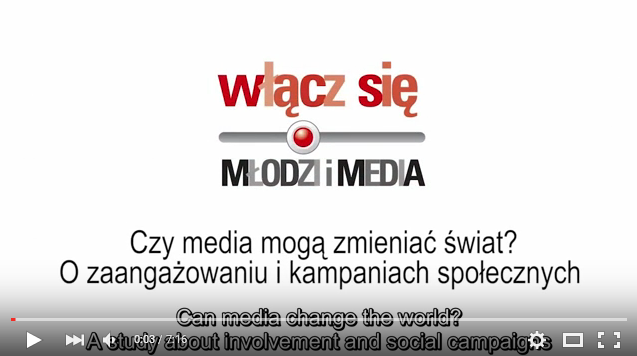Can media change the world?
Media have a big impact on us. They inform, warn, argue, play, tease. They can also turn our attention to important issues. One of the tools of impact is a social campaign. This is type of advertising, but, its aim is not to sell a product: campaign involves changing attitudes, sensitivity to specific problem. Learn how to prepare a social campaign with the students - use the video with the participation of experts and exercise.
1. Watch the movie “Can media change the world?” together with students, then suggest topics for discussion and do the exercise "Campaign Brief".
Film Can media change the world?

Topics for discussion
1. Give an example of a social campaign that you remember. Explain your choice.
2. Alone, without the help of media, we will achieve nothing much.
3. The media don’t have the influence on me.
Exercice: Campaign Brief
Materials: worksheet: campaign brief; topics of the campaign to be drawn; felt-tip pens and flipcharts; computer workstations (optional)
Key question: How to plan a social campaign?
Time: 45 minutes
Working methods: group work
The course of the exercise:
1. Divide the participants into groups of five, in which they are going to work on the campaign. Ask the students to think about a significant issue for them (eg. network security, hate speech on the internet, school or local environment). If the participants run out of ideas, they can always draw a topic (one of those prepared earlier), f.ex. Campaign encouraging people to spend less time online / Campaign against hate speech on the internet / Campaign encouraging to take care of one’s privacy on the internet.
2. Give the students their worksheets – campaign briefs. Explain to them that this is the so-called strategy, in other words a list of the most important pieces of information about the campaign. Give students some time to fill in their worksheets. After that ask the leaders of each group to give a short presentation of their work. Summarise the task together with all the participants.
3. Subsequently, ask each group to prepare a poster campaign promoting their social campaign. Encourage them to use free graphic programs such as piktochart (www.piktochart.com ) or canva (www.canva.com) to do that.
Evaluate the posters together with all the participants. Finally, encourage students to conduct the social campaigns they have worked on.
Social Campaign Brief
- What do we want to achieve in the campaign? Communicative goal.
- Who are you speaking to – set the target group for the campaign, as precisely as possible.
- What is the message of your campaign? Try to present it in one sentence.
- What social media will be used to get to the target group? A poster campaign, a leaflet or a spot (provide its location and duration).
- Allies – who could help on the campaign / what do you need.
